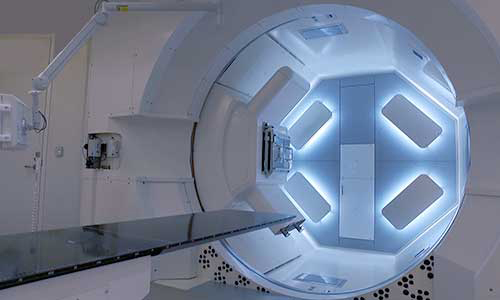Eye Cancer: Intraocular Melanoma
What is cancer?
Cancer is when cells in the body change and grow out of control. To help you understand what happens when you have cancer, let's look at how your body works normally. Your body is made up of tiny building blocks called cells. Normal cells grow when your body needs them, and die when your body does not need them any longer.
Cancer is made up of abnormal cells that grow even though your body doesn't need them. In most cancers, the abnormal cells grow to form a lump or mass called a tumor. If cancer cells are in the body long enough, they can grow into (invade) nearby areas. They can even spread to other parts of the body (metastasis).
What is intraocular melanoma?
Melanoma is a serious kind of skin cancer. This cancer starts in cells called melanocytes. You also have melanocytes in your eyes. When these cells become cancerous, it’s called intraocular melanoma. It's not as common as skin melanoma, but it, too, can be life-threatening.
Intraocular melanoma is the most common type of cancer of the eye in adults. But it’s still rare. The issue is more common in people with light-colored eyes and fair skin. It most often strikes people in their mid-50s. But people of any age and race can get the disease.
How does intraocular melanoma grow?
In most cases, the disease starts in a layer of the eye called the choroid. This thin, pigmented layer of blood vessels brings oxygen and nutrients to the eye. The cancer can travel to other parts of your body. These include both nearby tissues and more distant places through your lymph system or bloodstream. It can also involve other tissues in and around your eye. These include your iris, ciliary body, conjunctiva, or eyelid.
What are the symptoms of intraocular melanoma?
A small growth may not cause any symptoms. As it grows larger your symptoms may include:
-
Blurry vision or sudden loss of vision
-
Soreness in an eye, or bulging of the eye (uncommon)
-
Flashes or "floaters" in your vision
-
Dark spot on your iris. This is the colored ring at the front of your eye.
-
Change in the shape of your pupil. This is the black circle at the front of your eye.
If you have this condition, your eye healthcare provider may see it during a routine eye exam.
How is intraocular melanoma diagnosed?
Your eye healthcare provider may be able to diagnose intraocular melanoma just by looking at your eye. Your healthcare provider does this by looking into your eye through the pupil using a direct ophthalmoscope. This is a light and small magnifying glass. Or he or she may us an indirect ophthalmoscope. This is similar to a microscope. Healthcare providers sometimes use these other methods to make a diagnosis:
-
Computed tomography (CT) scans. CT scans of your eye use X-rays to create detailed cross-sectional images of your eye. This is painless. It isn’t commonly used.
-
Ultrasound. This uses high frequency sound waves to view inside your eye. This test is often used because melanomas in your eye have a certain look when seen on ultrasound.
-
Magnetic resonance imaging (MRI) scan. MRIs use radio waves and strong magnets to make an image. This test is helpful in learning the size of the tumor. It’s often used to check if the cancer has spread.
-
Angiography. During this procedure, your healthcare provider injects dye into a blood vessel in your arm. Then he or she takes pictures of your eye as the dye moves through it. The dye helps to show any changes more clearly.
-
Biopsy. Your healthcare provider may need to take a small sample of tissue from the growth. This is not often used alone due to the risk of eye damage.
How is intraocular melanoma treated?
Depending on your situation, you may have several options for treating this disease.
Active surveillance or watchful waiting
If the cancer is very small, isn’t causing problems, or your healthcare provider isn’t sure it's cancer, he or she may watch it very closely without starting treatment. If the tumor starts to grow, treatment can be started.
Surgery
This is a common approach. Your healthcare provider may need to only remove the growth and a small area of tissue around it. In some cases, however, he or she will need to remove the entire eye. He or she may also need to take out other surrounding tissues. These can include your eyelid and muscles around the eye.
Radiation
Different types of radiation are sometimes used for treating this disease, including proton therapy. Your healthcare provider may use a machine to direct beams of radiation into your eye. Another approach is to attach a small radioactive disk on your eye next to the tumor. This may be called plaque therapy. If you have this procedure, you'll have anesthesia to put you to sleep before it starts. The disk usually stays in place for about a week.
Photocoagulation
Your healthcare provider may use a special laser that destroys the tumor as well as blood vessels that feed the tumor. This is more often used for small tumors.
Transpupillary thermotherapy
This is the use of heat to destroy cancer cells.
You may need other treatments for the cancer if it spreads to other parts of your body.
Can intraocular melanoma be prevented?
Certain factors may make you more likely to get intraocular melanoma. Some factors you can't change. While others you can control. For instance, repeatedly being exposed to sunlight or tanning beds over time may raise your risk. But experts don't know this for sure.
Still, you shouldn’t use tanning beds. Some healthcare providers say to wear sunglasses with 99% to 100% UVA and UVB protection when outside in sunlight.
Treating this cancer can cause eye damage. For this reason, your healthcare provider may recommend that you not start treatment right away. This is called "watchful waiting." Your healthcare provider will check on you regularly and take pictures of the tumor to track its growth. If the tumor starts to grow, you may start treatment.
Talk with your healthcare provider
If you have questions about intraocular melanoma, talk with your healthcare provider. Your healthcare provider can help you understand more about this cancer.
The Johns Hopkins Proton Therapy Center

Proton therapy is used to treat certain tumors in children and adults. Our treatment center, located at Sibley Memorial Hospital in Washington, D.C., combines advanced proton therapy technology, the latest research and caring specialists.





